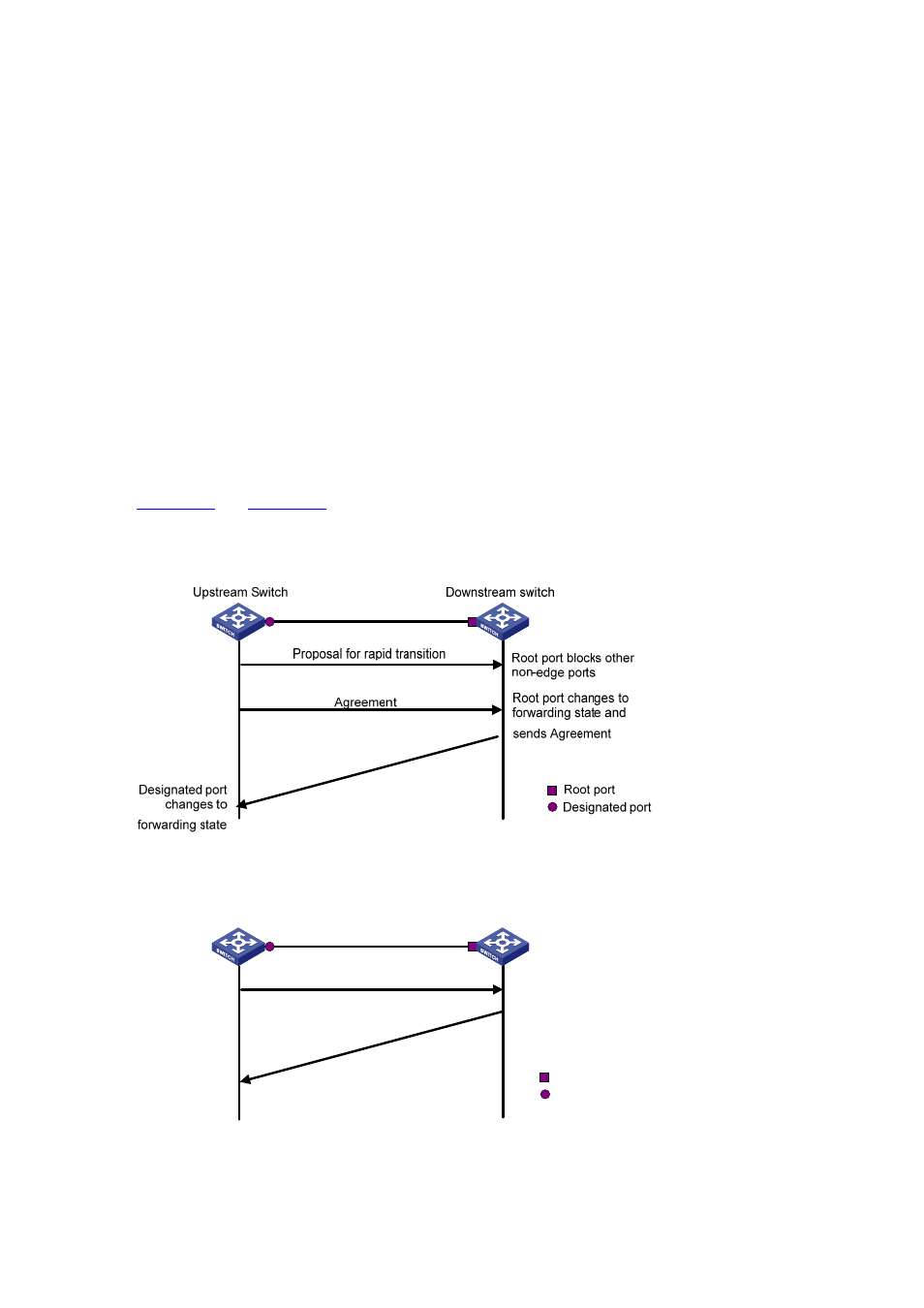Configuring no agreement check – H3C Technologies H3C WX6000 Series Access Controllers User Manual
Page 193

20-35
[AC A-GigabitEthernet0/0/1] quit
[AC A] stp config-digest-snooping
2) Enable Digest Snooping on AC B (the same as above, omitted)
Configuring No Agreement Check
Two types of messages are used for rapid state transition on designated RSTP and MSTP ports:
z
Proposal: sent by designated ports to request rapid transition
z
Agreement: used to acknowledge rapid transition requests
Both RSTP and MSTP switches can perform rapid transition operation on a designated port only when
the port receives an agreement packet from the downstream switch. The differences between RSTP
and MSTP switches are:
z
For MSTP, the downstream device’s root port sends an agreement packet only after it receives an
agreement packet from the upstream device.
z
For RSTP, the down stream device sends an agreement packet regardless of whether an
agreement packet from the upstream device is received.
show the rapid state transition mechanism on MSTP and RSTP designated
ports.
Figure 20-7
Rapid state transition of a designated port in MSTP
Agree
ment
Figure 20-8
Rapid state transition of a designated port in RSTP
Root port
Designated port
Root port blocks other
non-edge ports , changes
to forwarding state and
sends Agreement to
upstream switch
Downstream switch
Upstream Switch
Proposal for rapid transition
Designated port
changes to
forwarding state
Agree
ment
If the upstream device comes from another vendor, the rapid state transition implementation may be
limited. For example, when the upstream device adopts RSTP, the downstream device adopts MSTP
